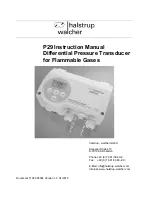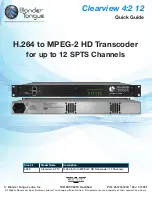
______________________________________________
HARRIS
888-9058-001
WARNING: Disconnect and lockout AC primary power prior to servicing
133
addresses the correct I/O line on the CPLD and it then sends out the command.
5.2.2.2 Life Support Backup
The CPLD monitors the watchdog circuit or more specifically the RESET line on the
micro module. If the micro module stops executing its program, the watchdog circuit will
activate the micro reset line and the control board in question is considered to be in
"Life Support Mode". Since all metering and status is done via the CAN bus, the CPLD
will still monitor and protect the systems to which it is connected, but there will be no
information reporting to the rest of the control system, the front panel display or a
remote control. Control and protection are now limited to the hardwired control lines on
the system control bus and any protection circuits built into the CPLD or the control
board itself.
5.2.3 Controller Area Network (CAN) Bus
The Controller Area Network or CAN bus is a high speed serial communications link
which is used between the transmitter control boards for transmission of control, status,
fault and metering information. The CAN bus is distributed as part of the System
Control Bus (ribbon cable). The CAN bus can operate at speeds up to 1Mbps and is
designed to operate in hostile industrial environments. The transceivers feature cross
wire, loss of ground, over voltage and over temperature protections. A CAN transceiver
connected to the CAN bus is considered a Node. There can be up to 110 nodes on the
bus with a maximum bus length of about 40 meters for 1Mbps operation.
In a CAN system, data is transmitted and received using Message Frames. Message
Frames carry data from a transmitting node to one or more receiving nodes. The
messages transmitted from any node on a CAN bus do not contain addresses of either
The transmitting node or of any intended receiving node.
Instead, the content of each Message Frame (e.g. ON, OFF, PS 1 Voltage, etc.) is
labeled by an identifier that is unique throughout the network. All other nodes on the
network receive the message and each performs an acceptance test on the identifier to
determine if the message, and thus its content, is relevant to that particular node. If the
message is relevant, it will be processed; otherwise it is ignored.
The micro modules have a built in CAN controller which connects to a CAN
Transceiver which becomes a node on the CAN bus. The CAN transceiver interfaces
the single ended CAN controller to the differential CAN bus for high common mode
noise immunity. All of the control boards can send and receive information over the
differential CAN bus, however the Main Controller determines what information is sent
and when it is sent for this application.
All fault reporting and status and metering information displayed on the GUI is sent on
the CAN bus to the Main Controller and to the External I/O board for remote monitoring.
Transmitter control signals are also sent via CAN but are also sent over hardwired
parallel control lines.
















































